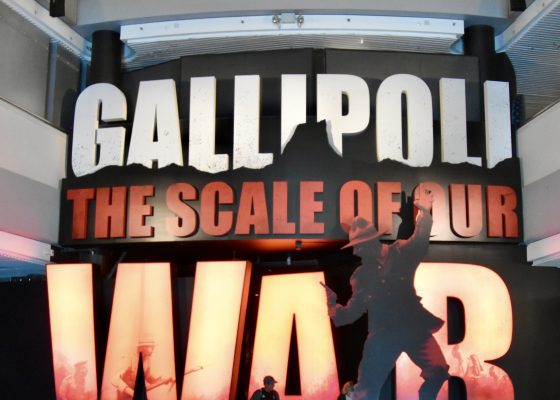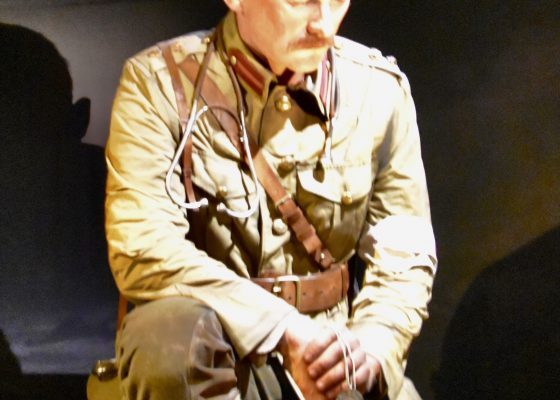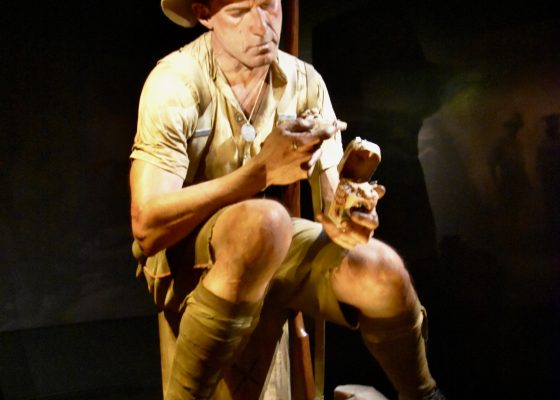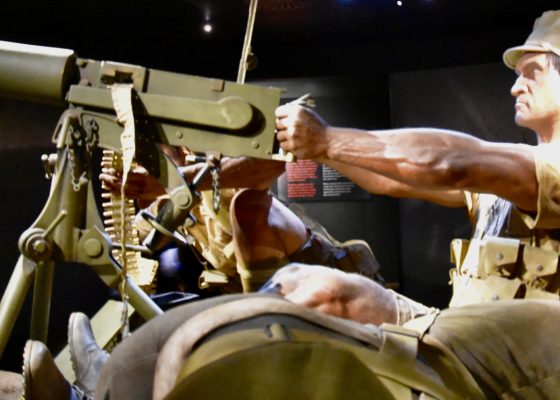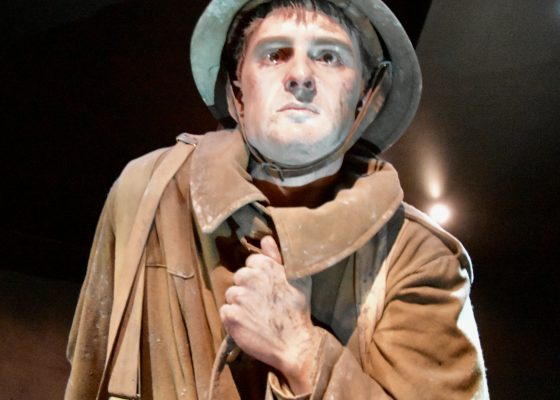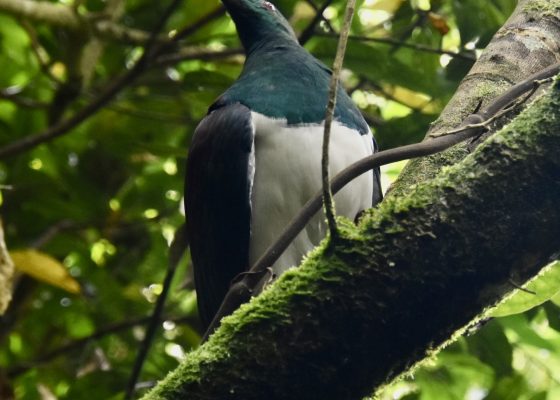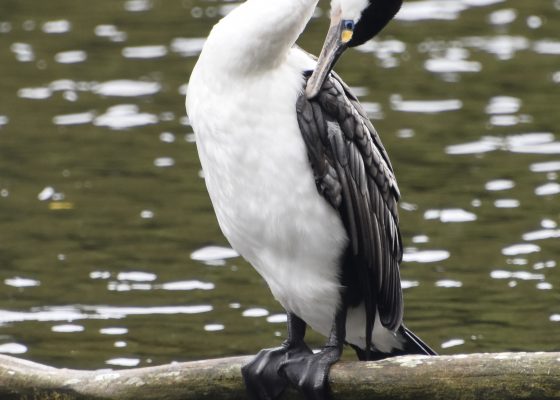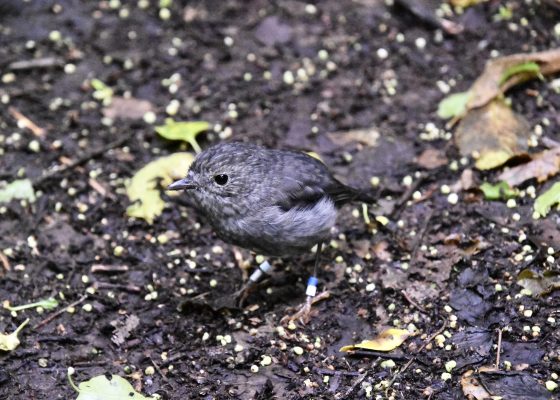Wellington – New Zealand’s Quaint & Happening Capital
The title of this post may seem at first glance to be contradictory. How can a place be both quaint and happening at the same time; yet that’s exactly how Alison and I felt about Wellington on our two visits to New Zealand’s capital city. The quaintness comes from its very Victorian appearance that includes the New Zealand parliament, The National Library, the Botanic Gardens and of course the huge statue of Queen Victoria in the Mount Victoria district of the city. If three mentions of Victoria in one sentence doesn’t evoke quaint, nothing will. The happening comes from the world class Te Papa Museum, the bustling waterfront, the Weta Workshop where costumes and props for the Lord of the Rings, The Hobbit, Avatar and many other movies are made and Zealandia, the huge wildlife refuge on the edge of the city. There’s lots to see and do in a short time. so let’s get a move on.
Our first visit to Wellington was on the March 2025 Adventures Abroad tour of New Zealand led by the inestimable Chris Tripodi who we first travelled with in Chile in 2024. We arrived in Wellington for a one night stay after an interesting day travelling from Rotorua through the Taupo Volcanic Zone, the largest on Earth, to Lake Taupo and Tongariro National Park. It was a long day so our Wellington sightseeing would begin the next morning .
We did have time for a truly excellent meal at Portofino, an Italian restaurant on the waterfront. I can never pass up the chance to try spaghetti bolognese and Portofino’s version was authentic and reaffirmed why this is my favourite pasta recipe. If Adventures Abroad comes up with a trip that includes Bologna, I’ll be the first to sign up.
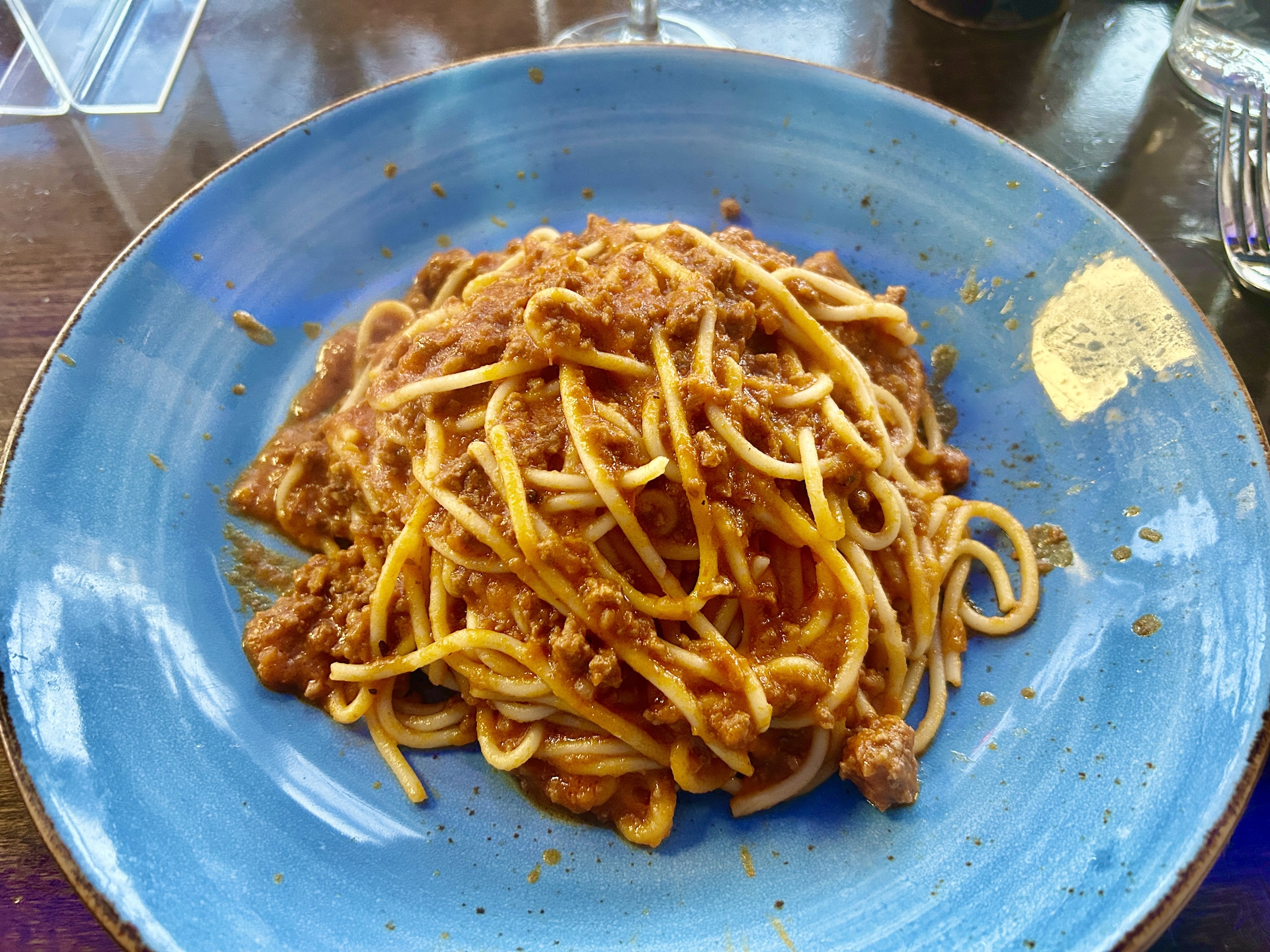
Touring Wellington
Unlike Auckland and other places on the upper part of North Island which were settled haphazardly by sailors, merchants, missionaries and ne’er-do-wells, Wellington was the first place in the country to be established by a deliberate act of colonization. In 1839 the New Zealand Company sent out colonists from Britain to create a new life on a site that had been chosen for them. As with most other early European settlements, there was already a Maori settlement on the excellent harbour that caught the eye of the New Zealand Company surveyors. However, it was of quite recent vintage, the Maori there having just driven out their predecessors a few years earlier during the Musket Wars. Representatives of the company did purchase land from some of these Maori iwis, but disagreements emerged over who got what and who had the right to sell which is perhaps not surprising as these iwis had only recently acquired these lands by right of conquest themselves.
While there was conflict in the areas just north of Wellington during the New Zealand Wars between 1845 and 1872, the growing city seems have been spared the kind of attacks that razed the first European settlement in New Zealand, Kororāreka, later Russell, in 1845. Its good fortune was sealed when in 1865, the capital was moved from Auckland to Wellington.
Today Wellington is a city of only just over 200,000 souls with a metro area of half a million. It consistently gets among the highest marks in the world for liveability which takes into account stability, health care, culture, environment, education and infrastructure, but not quaintness.
Our morning began with a visit to the Parliament district which is always of interest to Alison as a constitutional lawyer and parliamentary scholar. I have taken pictures of her in front of many national capitol buildings around the world and this morning she can add New Zealand to the list.
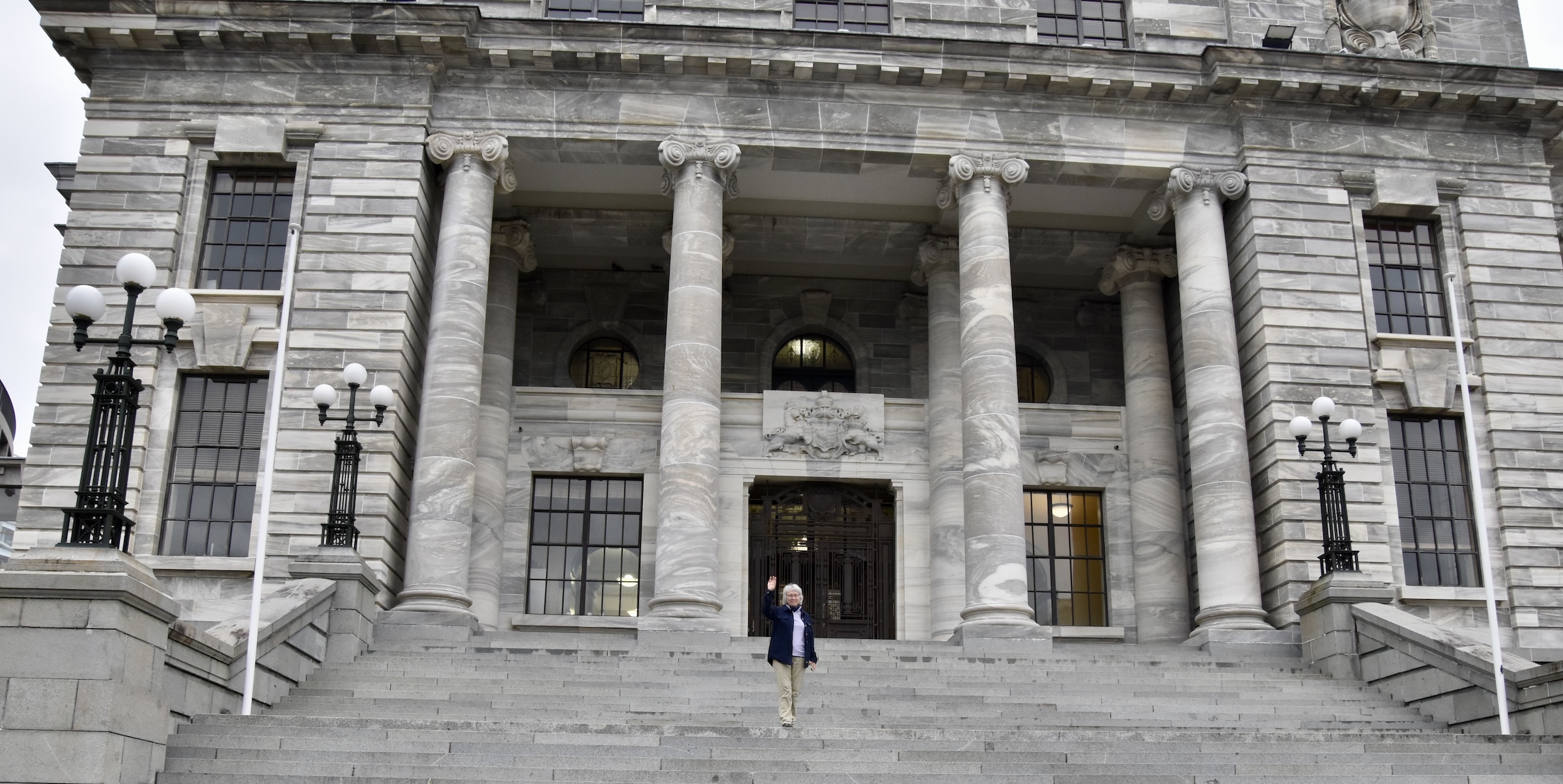
This is a broader view of the Parliament building and the principal administrative building that is affectionately known as ‘The Beehive’ to native New Zealanders.
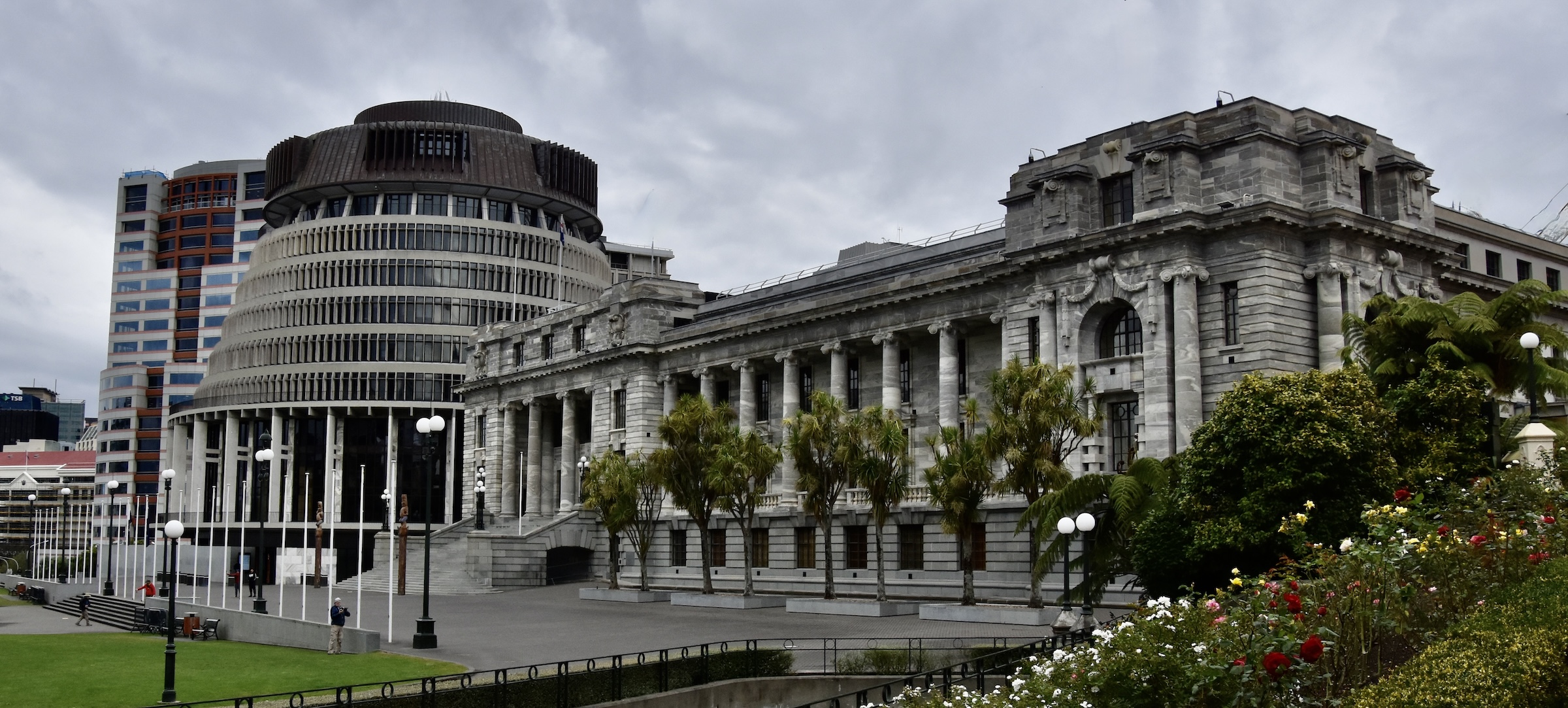
Take a closer look and see if something doesn’t strike you as unusual.
There’s nobody around! This is the national capitol building of a major country and there’s no sign of any security anywhere. If this were Washington, London, Paris or Ottawa there would not only be armed guards everywhere along with bollards, protective fencing and you name it. There would also be throngs of tourists. But not here. As you can see Alison was able to walk right up to the entrance to Parliament with nary a soul around and certainly no one to stop her from going inside. This what it used to be like in those other places, but not anymore. So this is another side of Wellington’s quaintness that other western countries can only yearn for.
Next to the Parliament building is the very Gothic revival Library of Parliament which is actually older than the Parliament building.
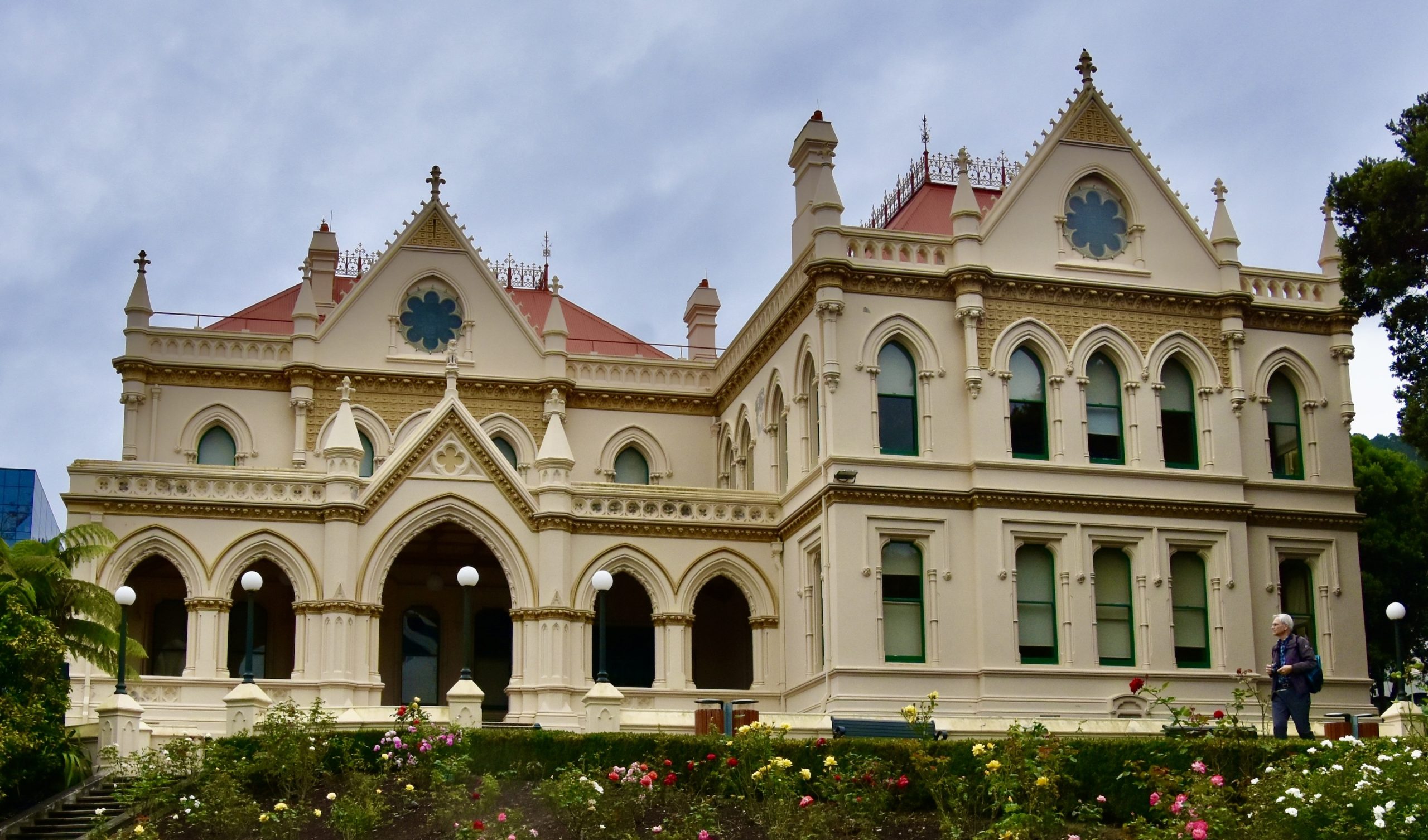
On the grounds there are a number of gardens and similar to other such locations, plaques marking trees planted over the years for various notable occasions. Here’s one that caught my eye because I did a double take. Yes, Charles finally really is the king. After over 70 years of being used to Queen Elizabeth, it was kind of a jolt to see this tangible proof of her passing.
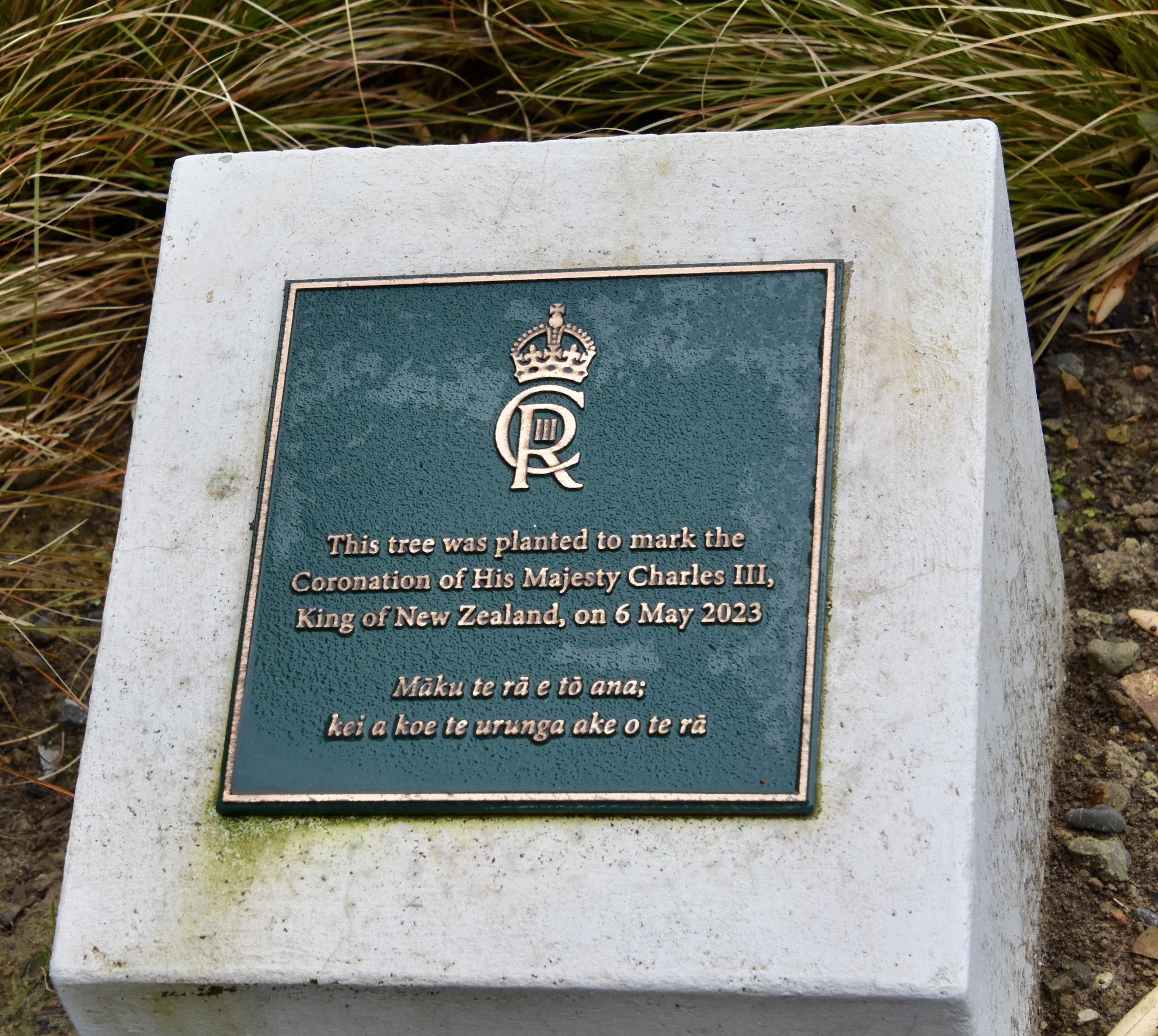
Also to be seen in this area, directly across the street from the Parliament building, is the predecessor of The Beehive, the Government Building which just happens to be the largest wooden structure in the entire Southern Hemisphere. From a distance it looks like it’s made of stone, but it’s actually made almost entirely of native New Zealand kauri trees. It has been restored and most of it is now the home of the Victoria University Law School.
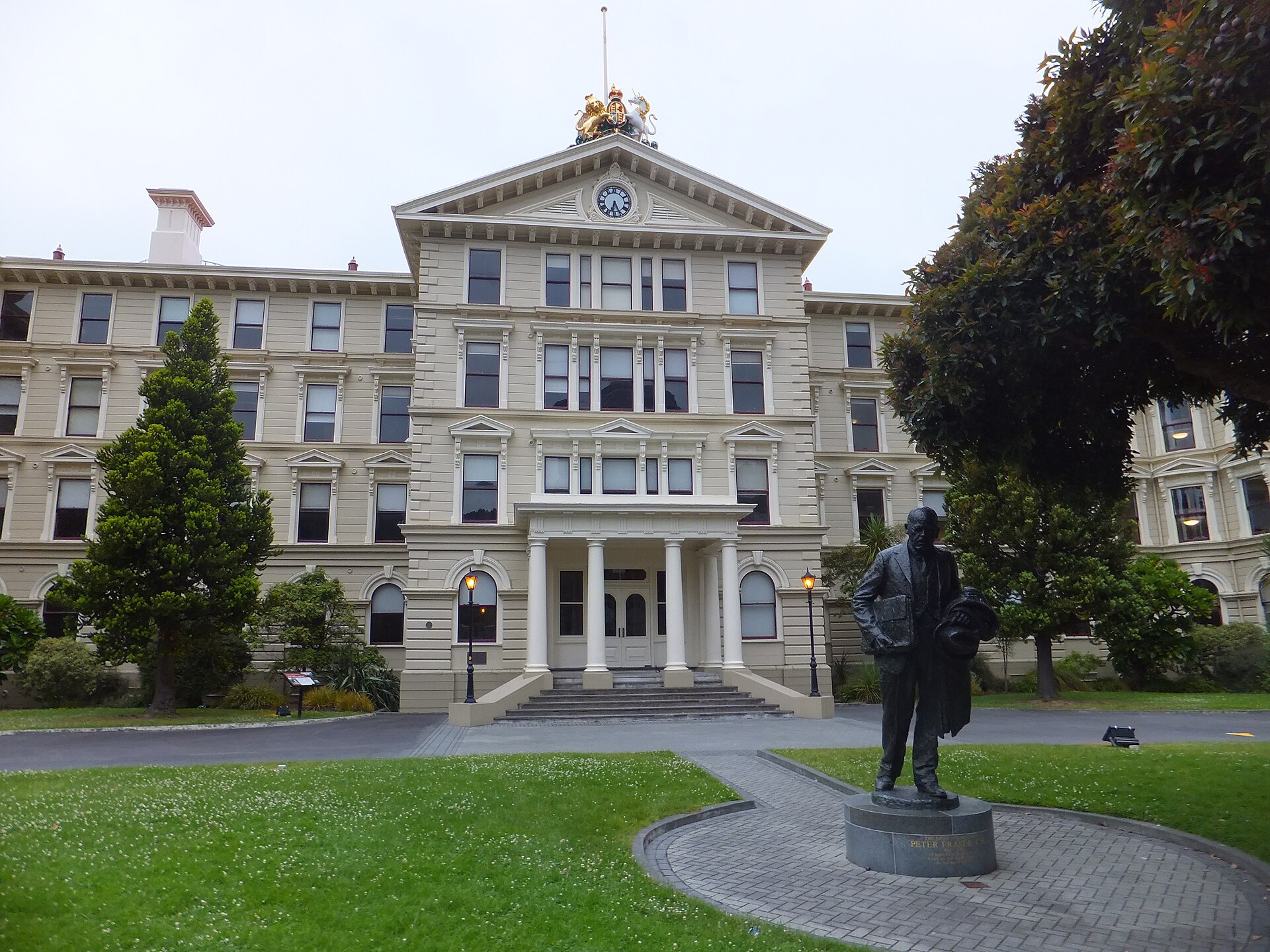
One other object of note in this area is the Wellington Cenotaph which was dedicated in 1932 to those who fell in WWI. It is topped with this figure mounted on Pegasus (note the tiny wings on his two front feet) standing over the spoils of war – a few cannons and German spiked helmets. Not much to show for the over 18,000 Kiwis who died in that conflict. We’ll learn more about that sacrifice later in this post.
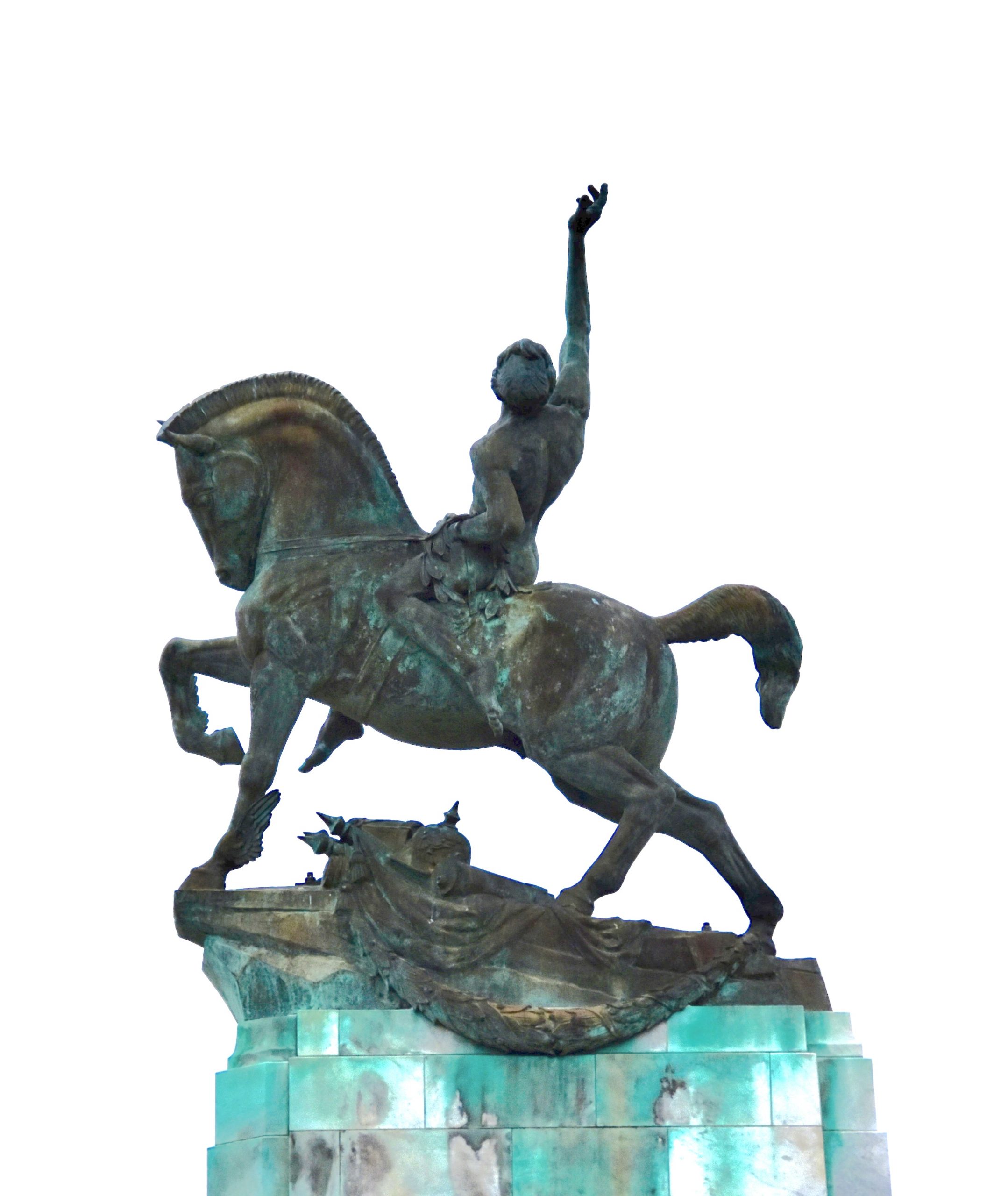
Leaving the parliamentary district we drove a short distance to the entrance to the Wellington Cable Car which has been in operation since 1902. In five minutes it takes us 120 metres (393 feet) up from central Wellington to the entrance to the Wellington Botanical Gardens.
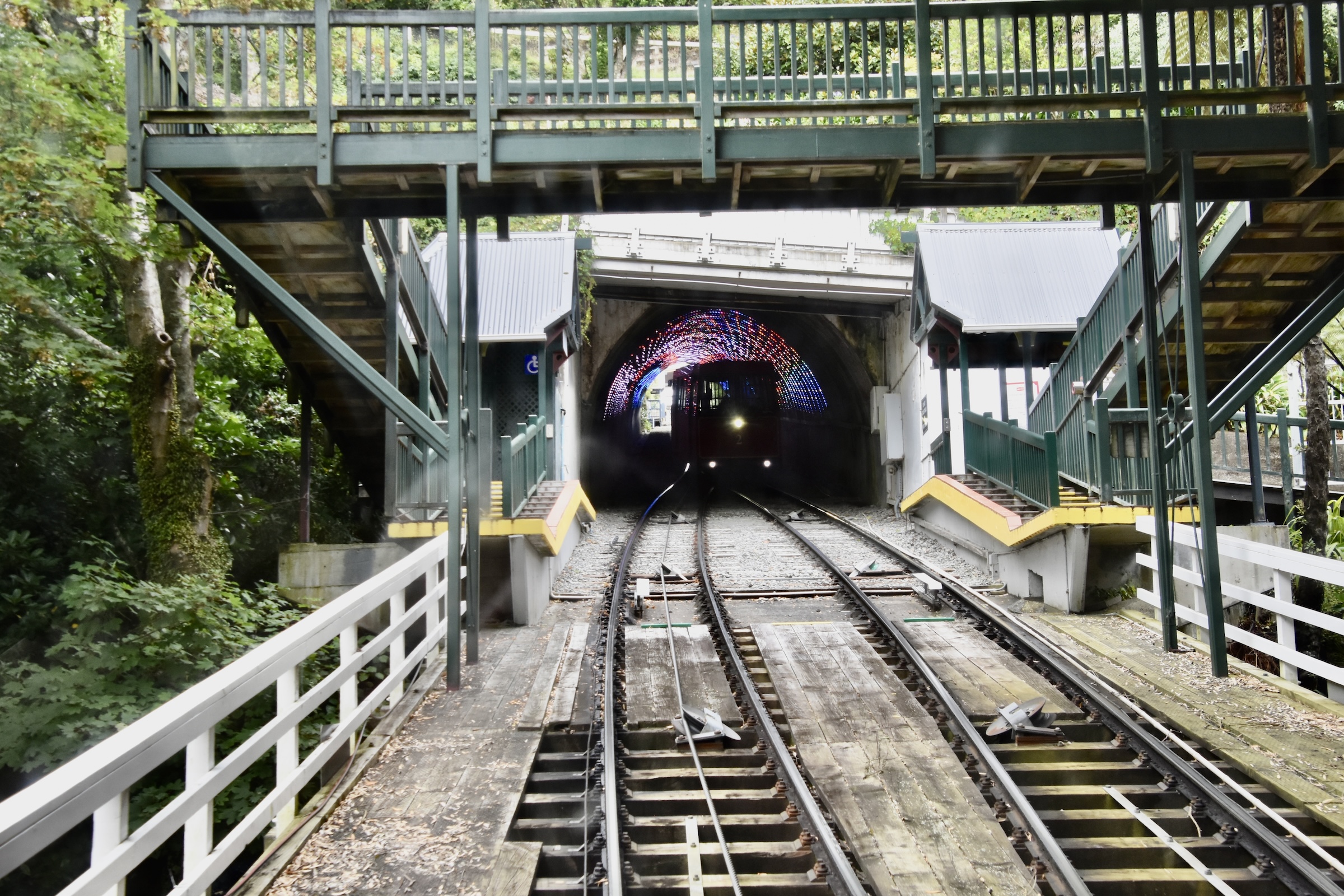
Boasting the best views in the city, we get this look from the top.

We disprove that inflated claim when we reboard the bus and go even higher to the see the view from the top of Mount Victoria and get this view of Wellington.
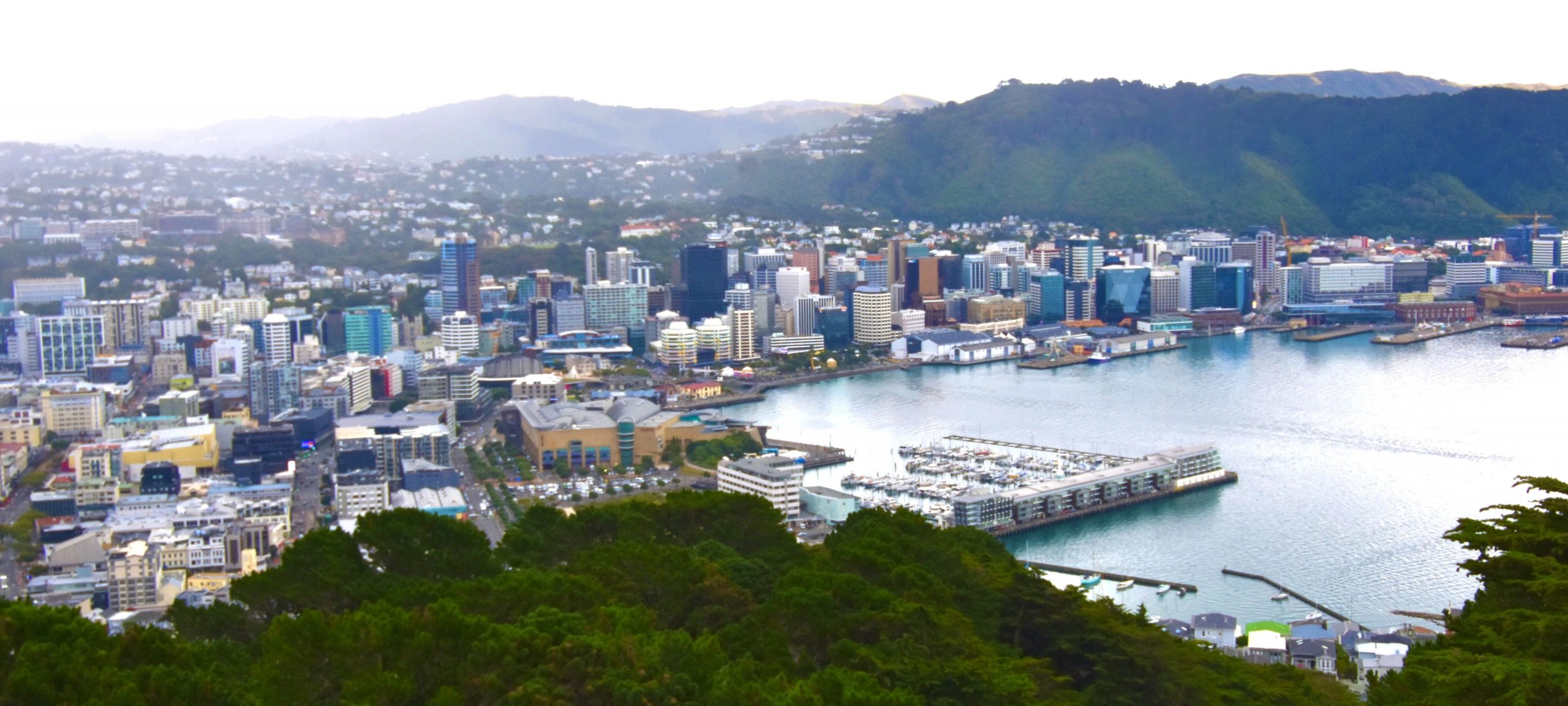
The Museum of New Zealand – Te Papa Tongarewa
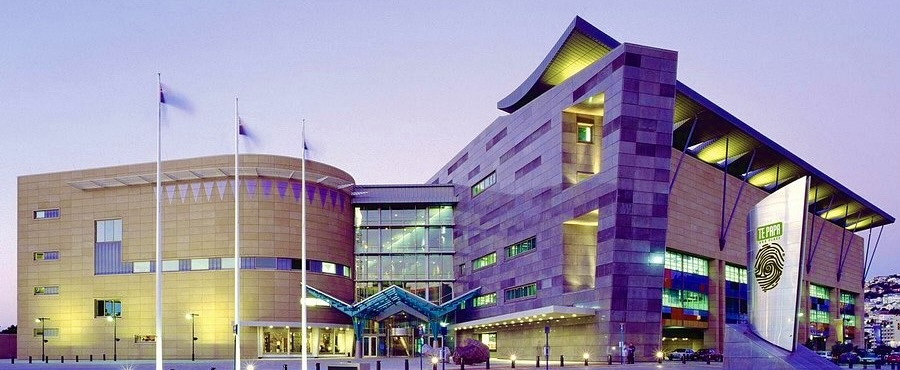
Our final stop on the Adventures Abroad tour of Wellington was the most significant. This is the Museum of New Zealand or in Maori Te Papa Tongarewa which translates as ‘container of treasures’, and boy is that true. Usually just referred to as Te Papa, this ultra modern building opened in 1998 and is the country’s equivalent of our Canadian Museum of Civilization.
We were given a guided tour that lasted about an hour and then had a little time to explore on our own, before we were scheduled to board the Cook Straits ferry to South Island. I could do a whole post on Te Papa, but for the purposes of this post I’m just going to highlight a few of the galleries and exhibits that impressed me the most.
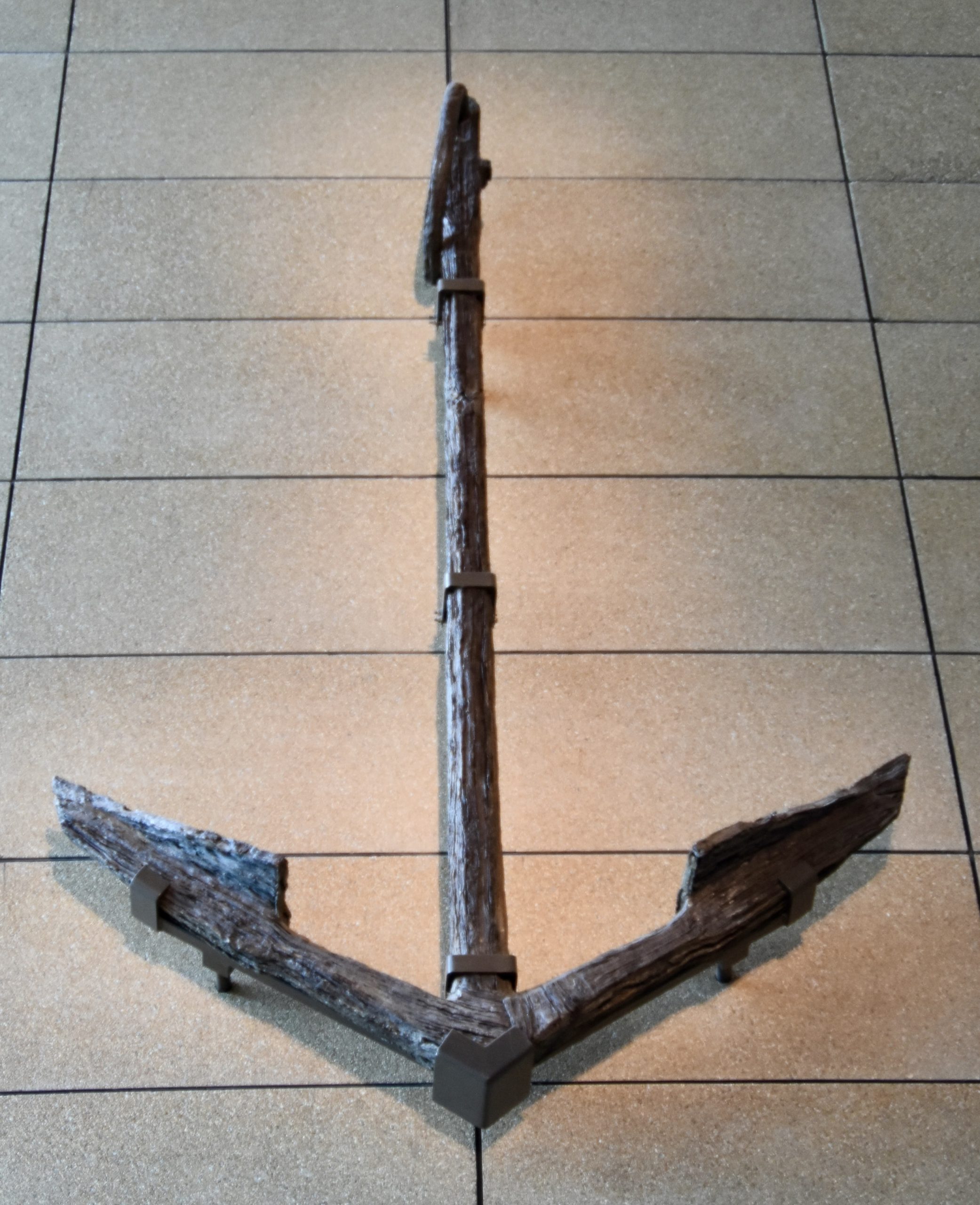
You’ll find this anchor mounted on the wall at the very entrance to Te Papa. It doesn’t look that special, but there is a great story behind it which you can read here. Even without a great back story, its status as the oldest metal object in New Zealand would make it important.
As I’ve noted in previous posts from New Zealand, the country still very much remembers the tragic loss of life at the Gallipoli Campaign of WWI which saw 2,779 young men lose their lives on Turkish soil in a futile campaign that lasted more than eight months. Another 5,500 were wounded. It is considered the country’s Baptism of Fire, just as for Canada it was Vimy Ridge.
Just past the ticket kiosks you see the entrance to Gallipoli: The Scale of Our War which was intended to be a temporary exhibit, but has been extended several times due to its popularity.
The exhibit focuses on the true stories of eight men who fought at Gallipoli and they have been faithfully reproduced at 2.4 times life size by Weta Workshop which I mentioned at the beginning of this post. It took them 24,000 hours to do it and the results are stunning and moving. When Alison and I returned to Wellington at the end of the Adventures Abroad trip we returned to Te Papa just to walk through this a second time.
Here is a small gallery showing some of the figures. Double click to open and double click again to enlarge. Unfortunately most of the exhibit is very darkly lit so the photos are not my best.
- Gallipoli Exhibit
- Lt. Spencer West
- Lt. Col. Percival Fenwick
- Pvt. Jack Dunn
- Maori Machine Gun Battery
- Sgt. Cecil Malthus
I commented in my post from Auckland that included the War Memorial Museum there, that the mass extinction of New Zealand birds by both the Maori and European settlers and their sidekicks, the rats, cats and others, was unprecedented. Te Papa has a very extensive collection of these birds of which these are just a few.
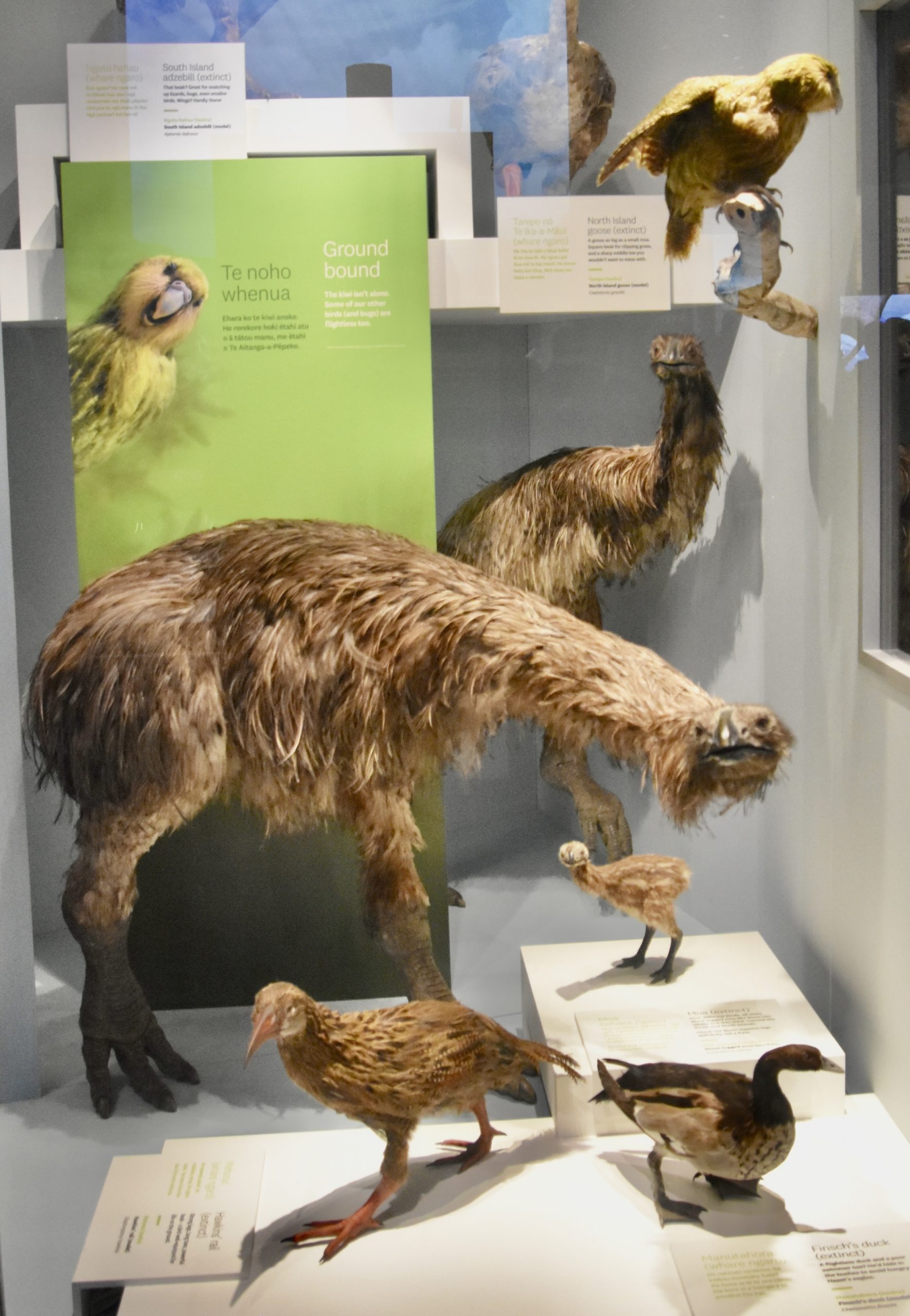
Most well known of course was the giant moa and Te Papa has this crafted life-size model that is realistic enough to make you think it was once alive. These were the largest birds to ever share this planet with humans and they thrived on their own for 50 million years and then less than two hundred when we showed up.
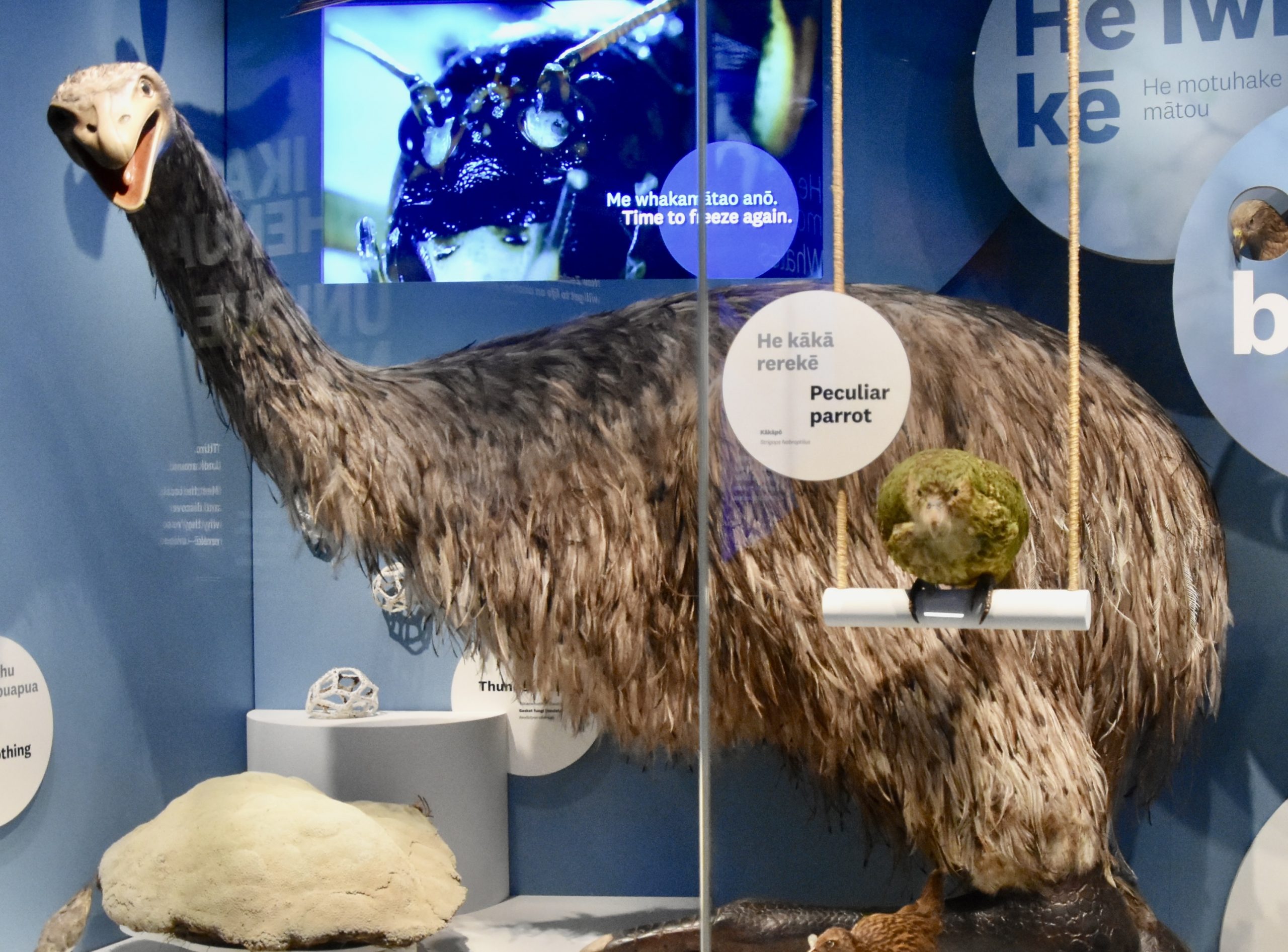
Believe it or not there was another bird that actually preyed on moas, Haast’s eagle could kill a moa weighing up to 200 kilos (441 pounds) and was certainly capable of dispatching a human with its claws that were as big as a tiger’s. But once the moas were gone the largest eagle to ever live followed it shortly thereafter. This model, based on well preserved skeletons, gives an inking of how terrifying these birds were.
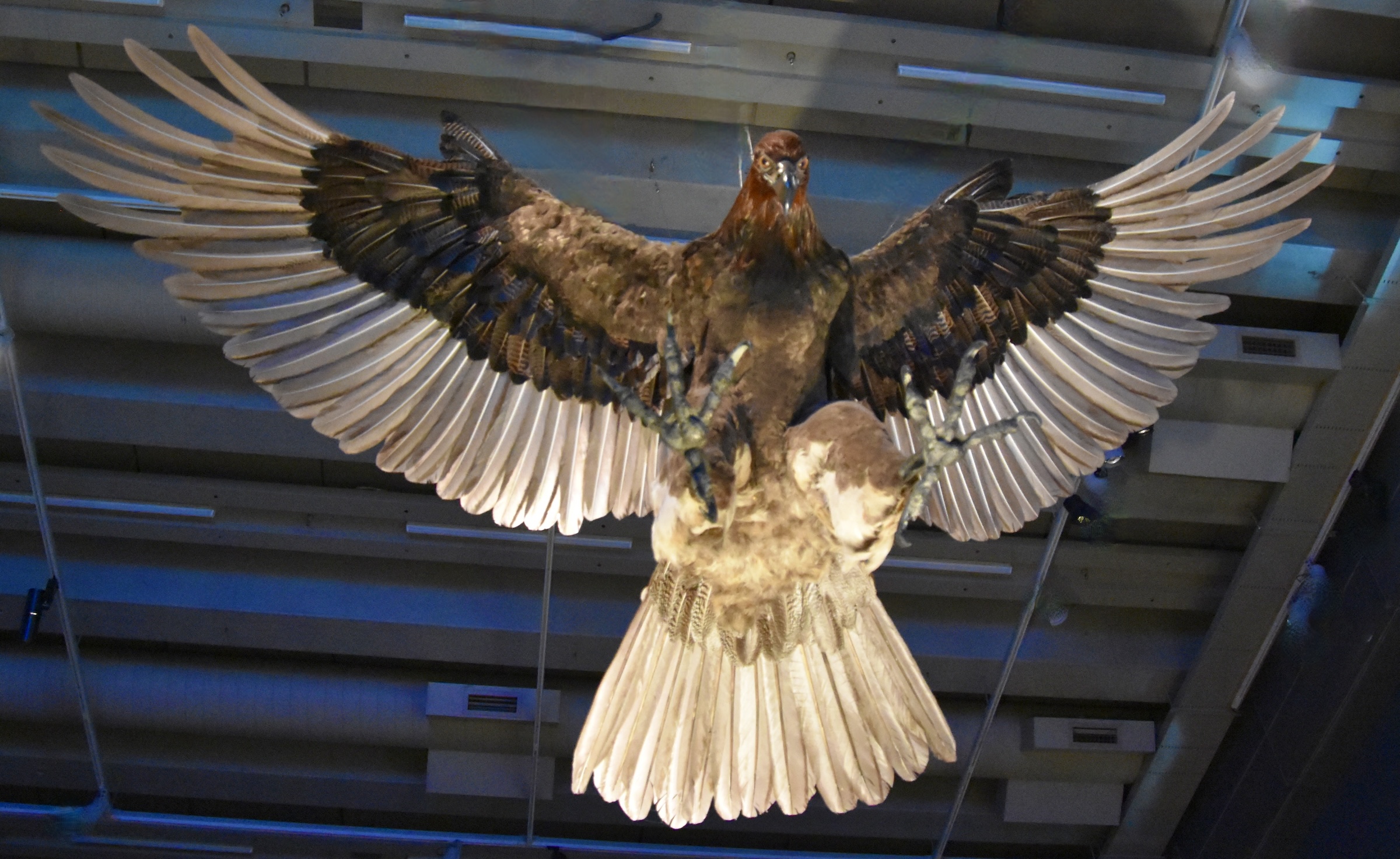
There are many galleries featuring artifacts from all over Polynesia that are well worth exploring.
One thing you should not miss seeing is Rongomaraeroa, a modern marae which is meant to encompass all the people of New Zealand. Maraes are Maori community spaces and generally off limits to anyone other than members of the iwi (tribe) for whom it is sacred ground. There are several other maraes on exhibit at Te Papa, but you are not allowed to enter them. This marae was purpose built for Te Papa and is the only universal marae in the country.

After leaving Te Papa we rejoined the group for the ferry trip to South Island. However, like General Montgomery, “We shall return”.
Wellington Redux
After the AA tour ended in Christchurch we said goodbye to Chris and most of the others who were headed off to Australia and we took a short flight to Wellington to resume our tour of the North Island. We wanted to spend more time at Te Papa, which we did, and to see two specific attractions, Weta Workshop and Zealandia.
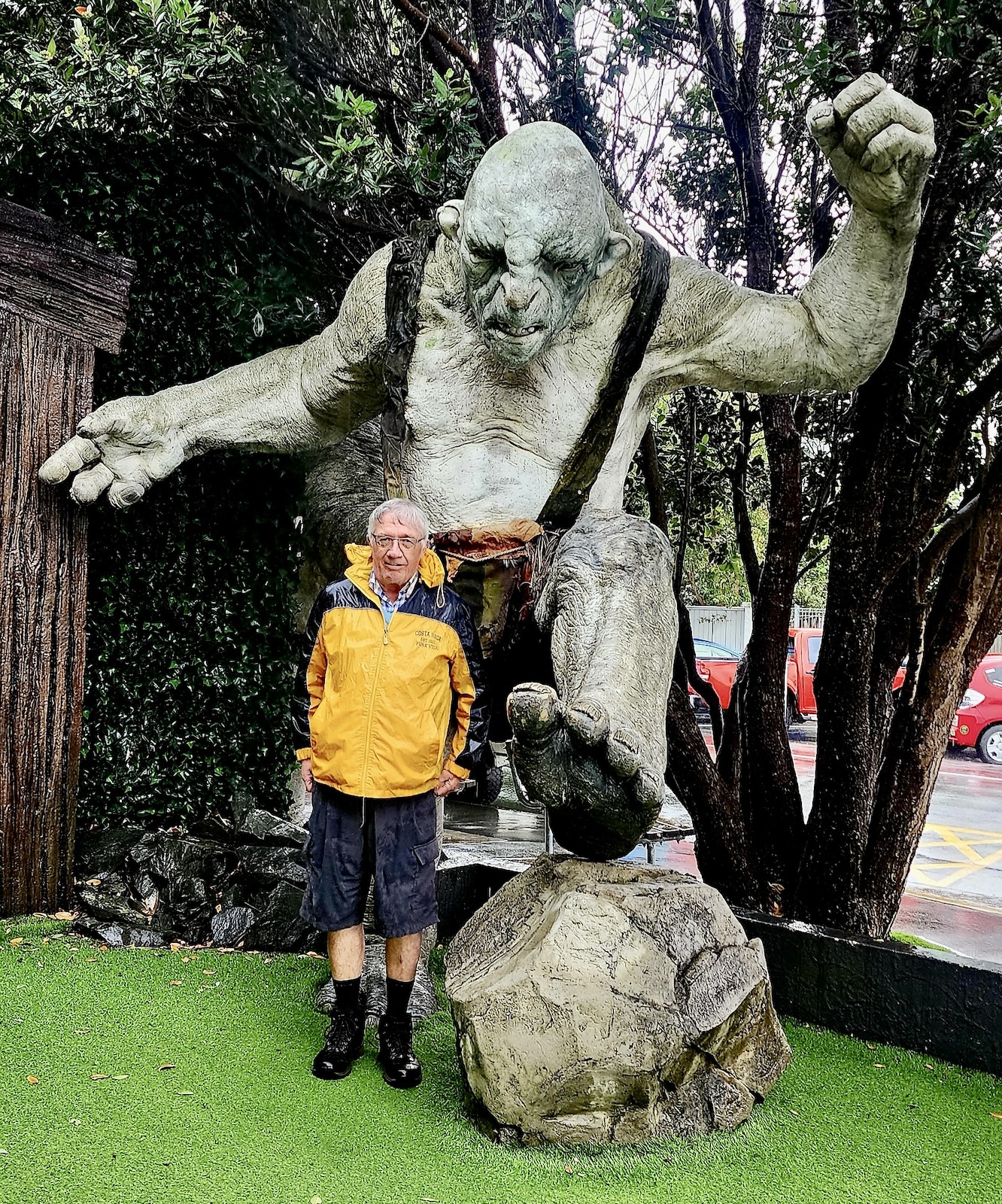
Chances are that if you have any interest whatsoever in adventure and fantasy movies, then you have seen the output of the Wellington based Weta Workshop. Founded in 1987 by husband and wife team Richard Taylor and Tania Rodger, it has produced costumes, props, special effects and more for the Lord of the Rings trilogy, The Hobbit, Avatar, Black Panther, King Kong and dozens more movies and TV series. It is now the go to resource for directors and producers from around the world looking for cutting edge technology to make their fantasy ideas become real.
Located in the Wellington suburb of Miramar, Weta Workshop offers 90 minute guided tours of a portion of its studio. It was the perfect place to go on a dreary rainy morning in Wellington. I had booked the tour on line through the link above and dropped Alison at the entrance while I went to find a parking space in what is essentially a residential area. The tours are quite limited in size as the various rooms that you visit on the tour are not that big.
The huge creature pictured above that is about to smash me to a pulp is a cave troll from Lord of the Rings. He guards the quite modest entrance to the workshop.
Inside you see the very recognizable figure of Gollum, the pathetic creature who guides Frodo and Sam to Mount Doom, which readers may recall we saw in the last post.
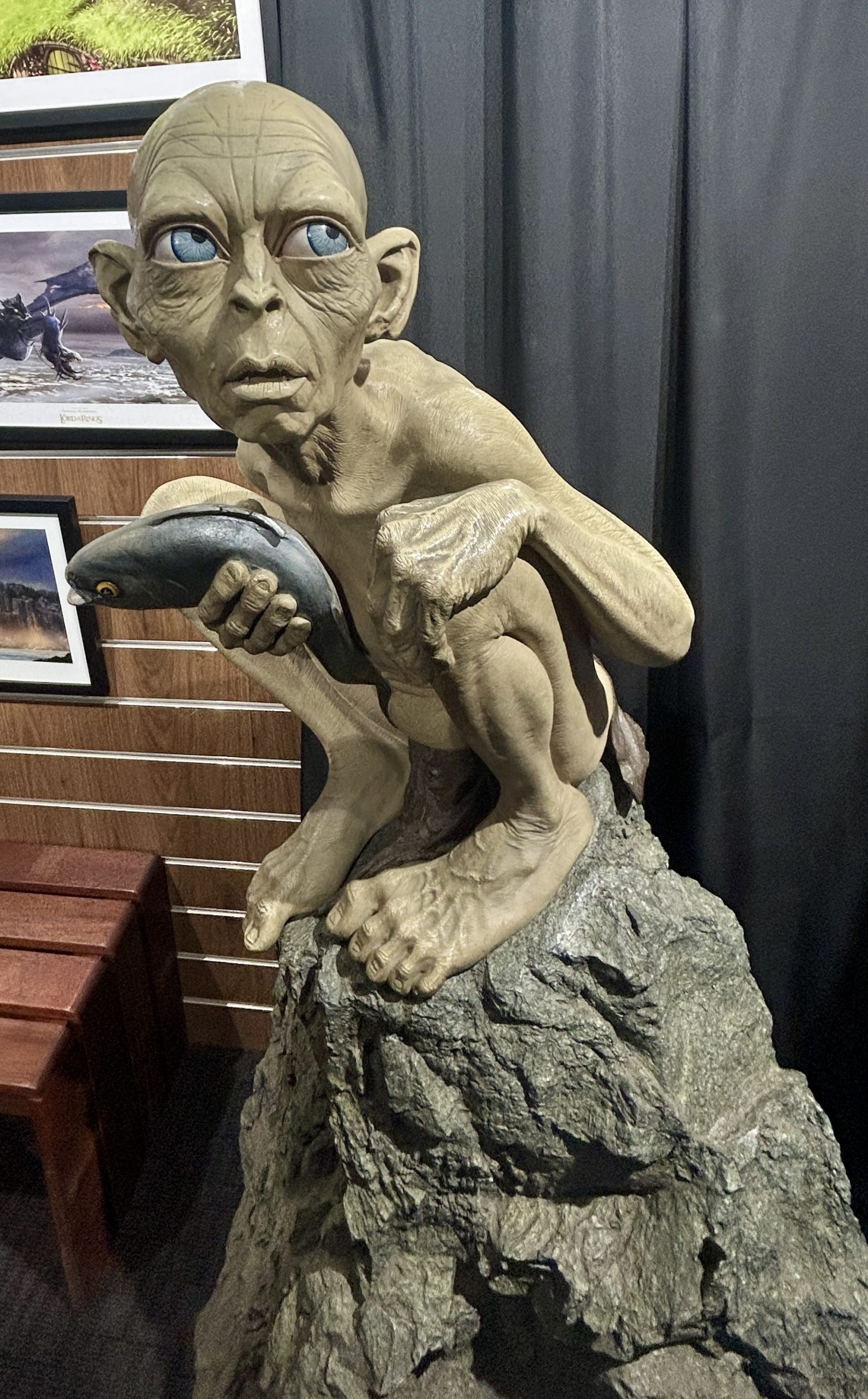
Also in this room is this guy who’s having a very bad hair day.
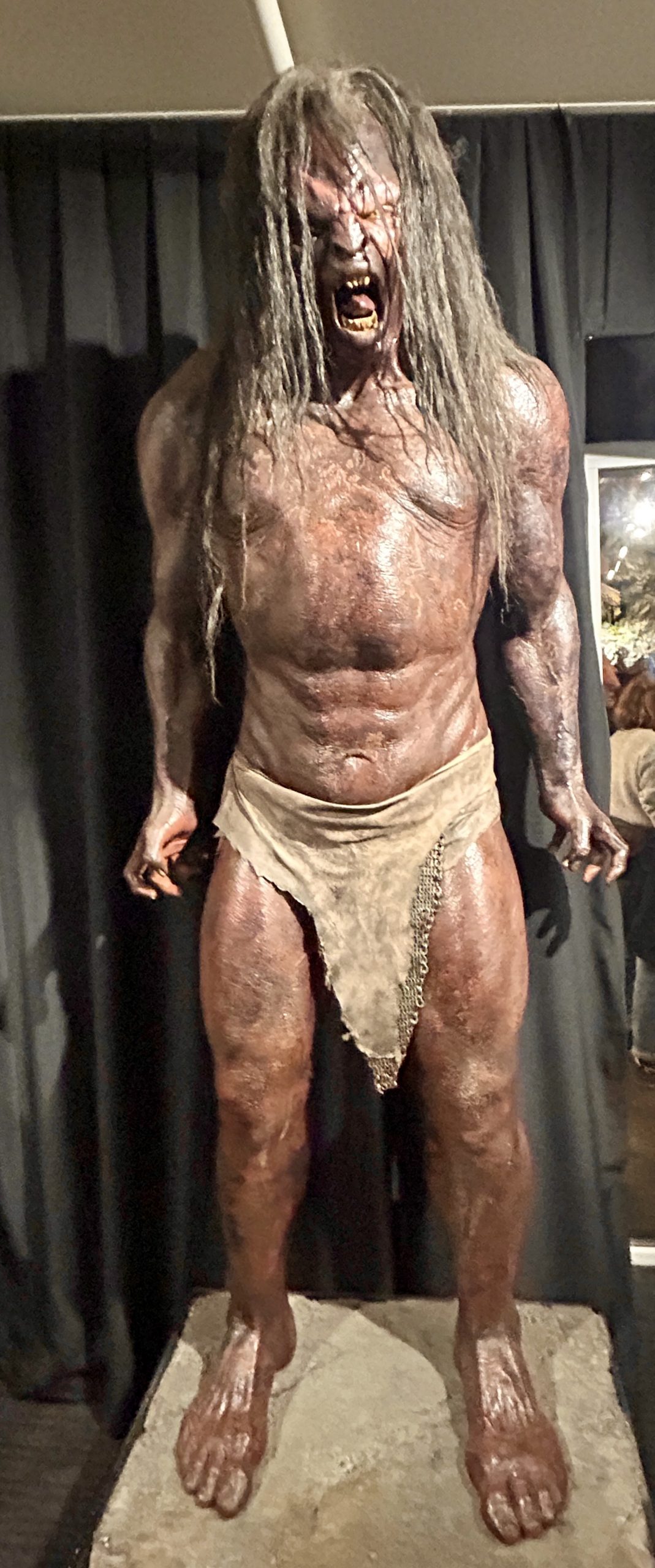
I won’t go into any great detail about the tour itself. A few photos will suffice to let the reader decide if this is for them or not.
This is the arms room where the actual weapons used in Lord of the Rings and The Hobbit are on display. It was interesting to learn that these are the real deal in terms of fine steel and very heavy. They were used in close up shots, but for the purposes of battle scenes lighter wooden mockups were used.
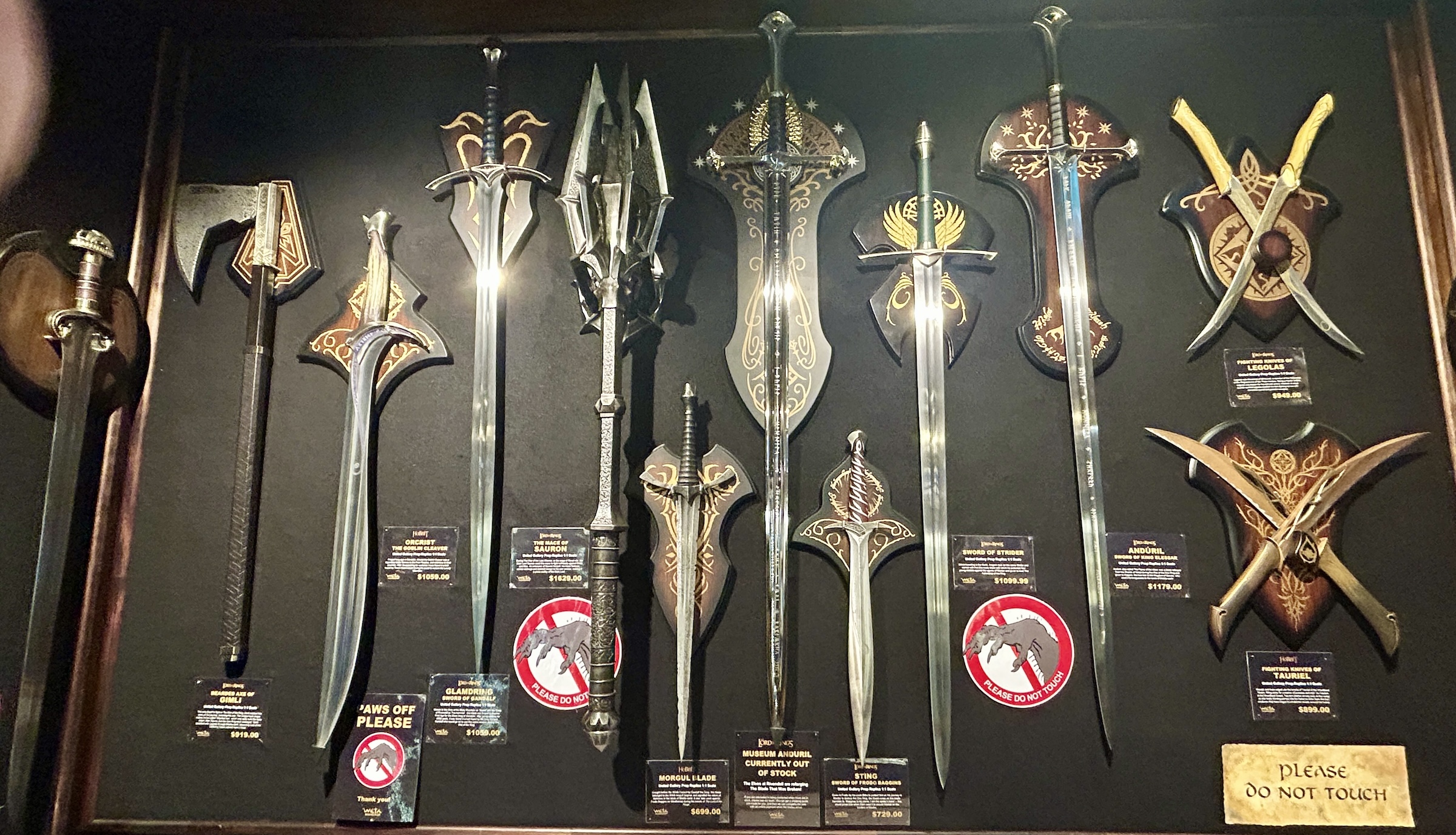
Over the years Weta Workshop has produced hundreds of original masks for the various productions they have worked. This is a display of a few of them and in one room you will learn just how complicated and time consuming a process it is to make these for a specific actor.

Not all the creatures produced are monsters. Here is Alison cuddling these little fur balls.
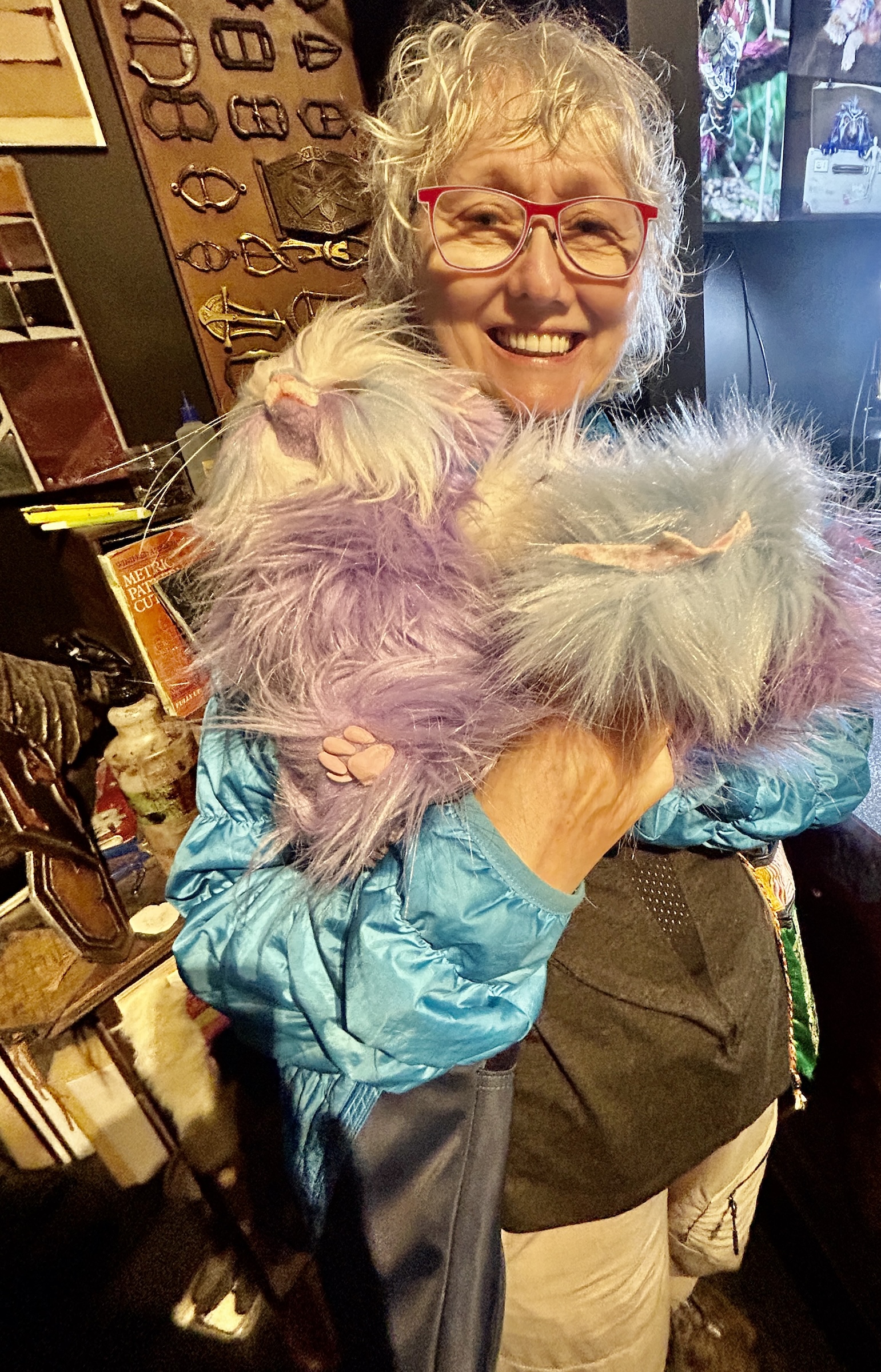
Kim Beaton gave us a demonstration on how to make literally anything, no matter how big or small, out of just tin foil. If you don’t believe me follow this link for a YouTube video shot in this same room and you’ll be amazed at what she can do.
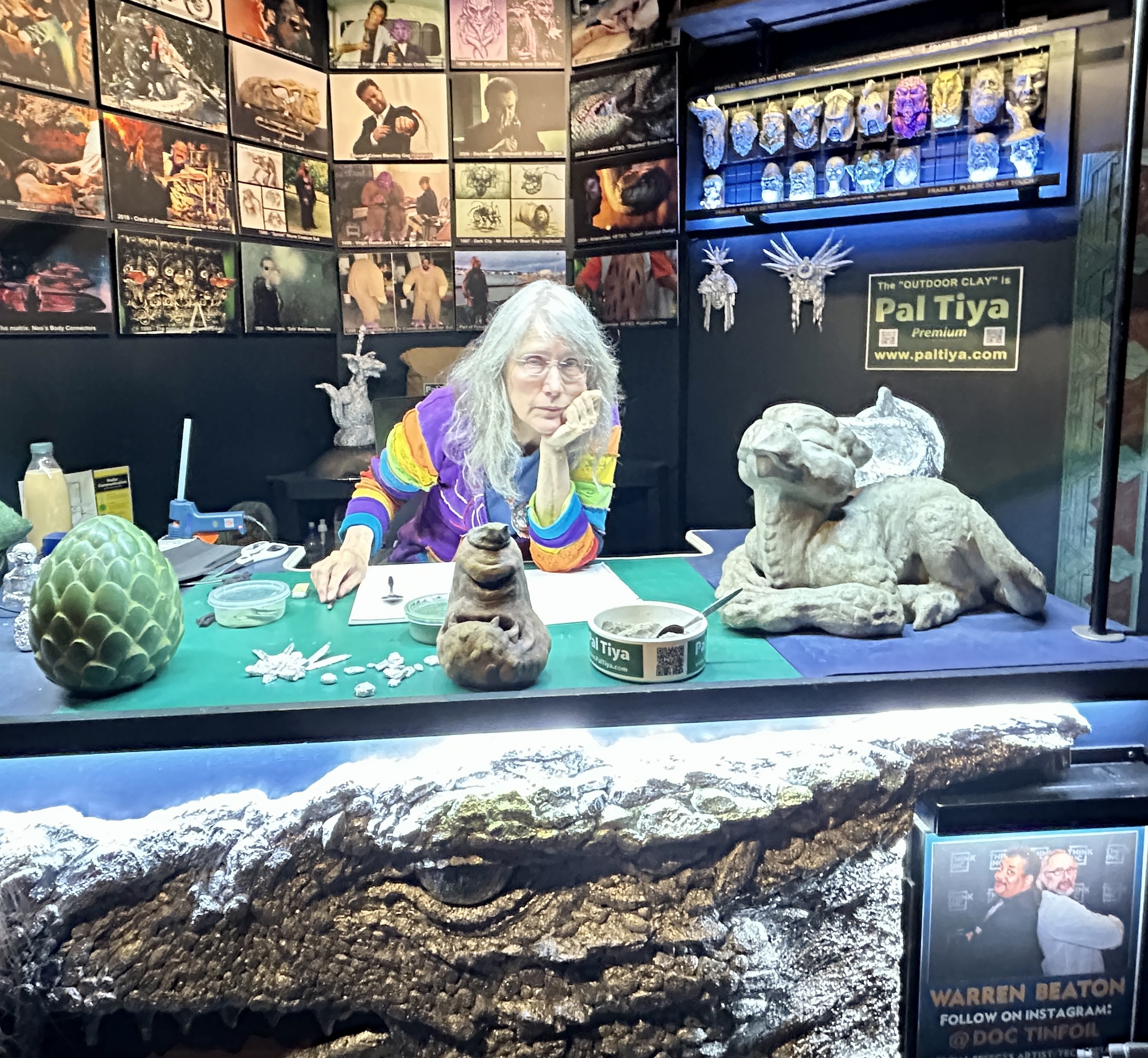
One of the profitable side lines to develop out of creating fantasy figures for film and TV has been the production of collectable miniatures, which are insanely popular.
This is the Weta cave where many of them are on display.
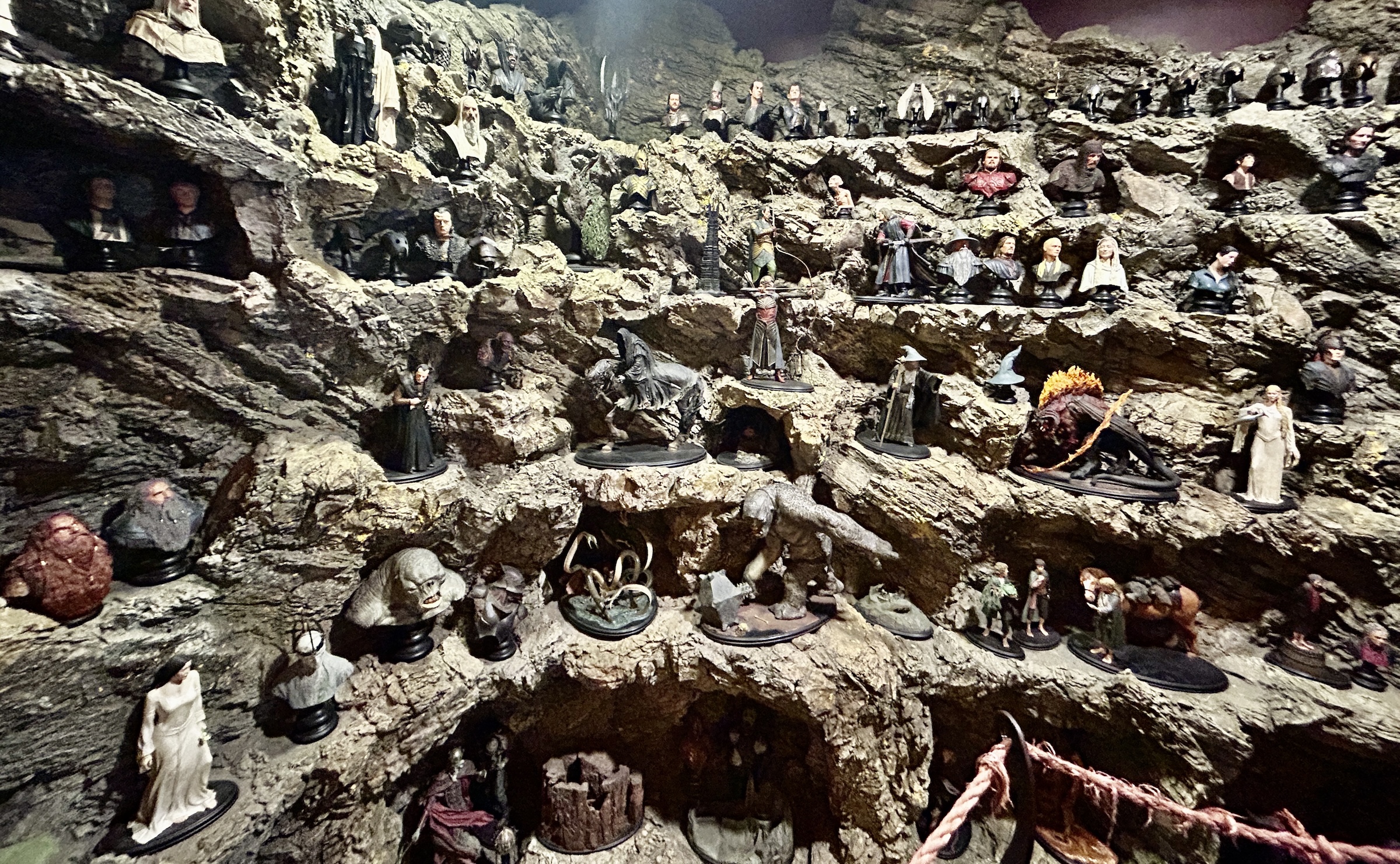
These and many other fantasy related products are offered in the Weta Cave for prices that are somewhat eye watering, but heck who wouldn’t shell out $79.00 USD for an orc skull?
On a scale of 1 to 10 I would say my current interest in fantasy movies and books is about a 4. It used to be much higher when I was younger. However, in terms of enjoyment, I would place a visit to Weta Workshop at an 8 out of 10 and from the reactions of most of the other people on the tour, it was closer to a 10.
Zealandia
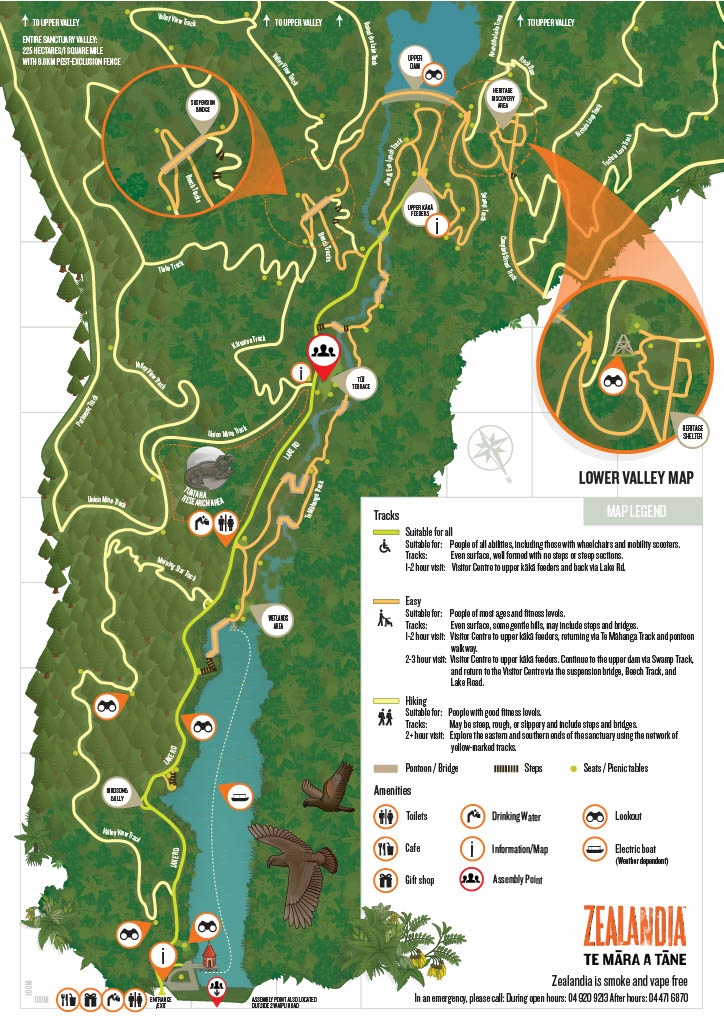
The other Wellington attraction we came back to see was Zealandia, a not-for-profit wildlife sanctuary in the hills above the city. It is described as the world’s first fully- fenced urban eco-sanctuary. What this means is that the creatures responsible for wiping out much of New Zealand’s unique avifauna are kept out and some very rare birds are able to survive here, most notably the takahē, a bird once thought to be extinct. It is also home to New Zealand’s unique reptile, the tuatara which is the only known member of its order and deemed by scientists to be a ‘living fossil’.
Now it’s unlikely we’ll see these two species, but chances are great for many others and from the map above you can see that there are a lot of trails. However, the full extent of Zealandia is much greater as shown on this map of the entire sanctuary which also includes photos of some of the birds to be found here.
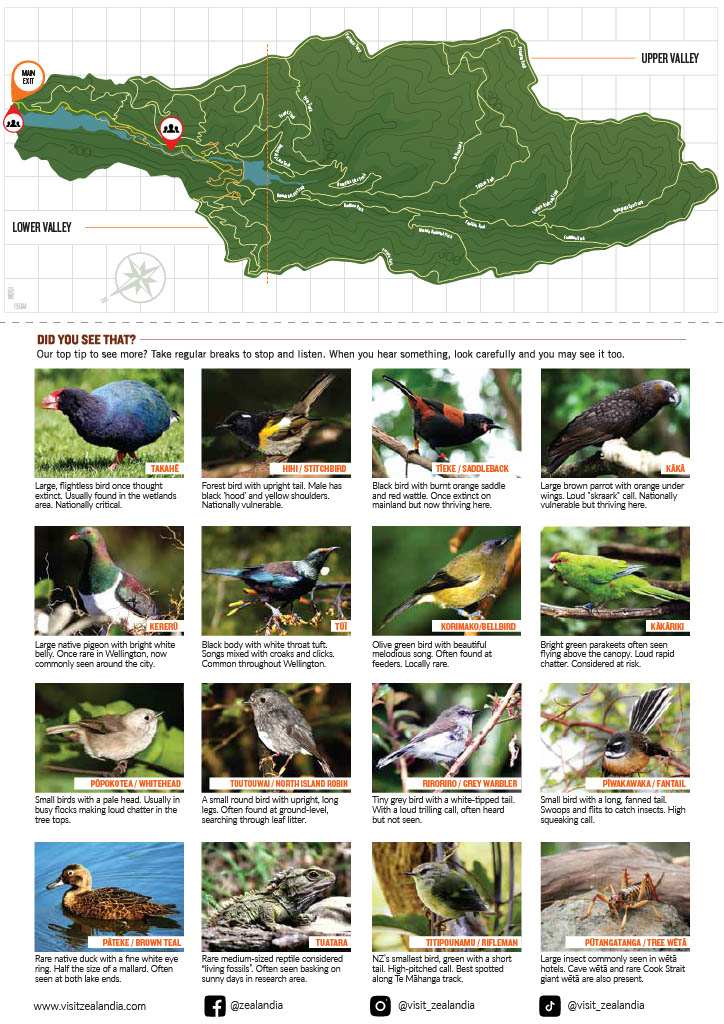
We came here on our second morning in Wellington and unfortunately the weather was no better than the day before. Still we weren’t going to pass up a chance to walk through this beautiful ecosystem.
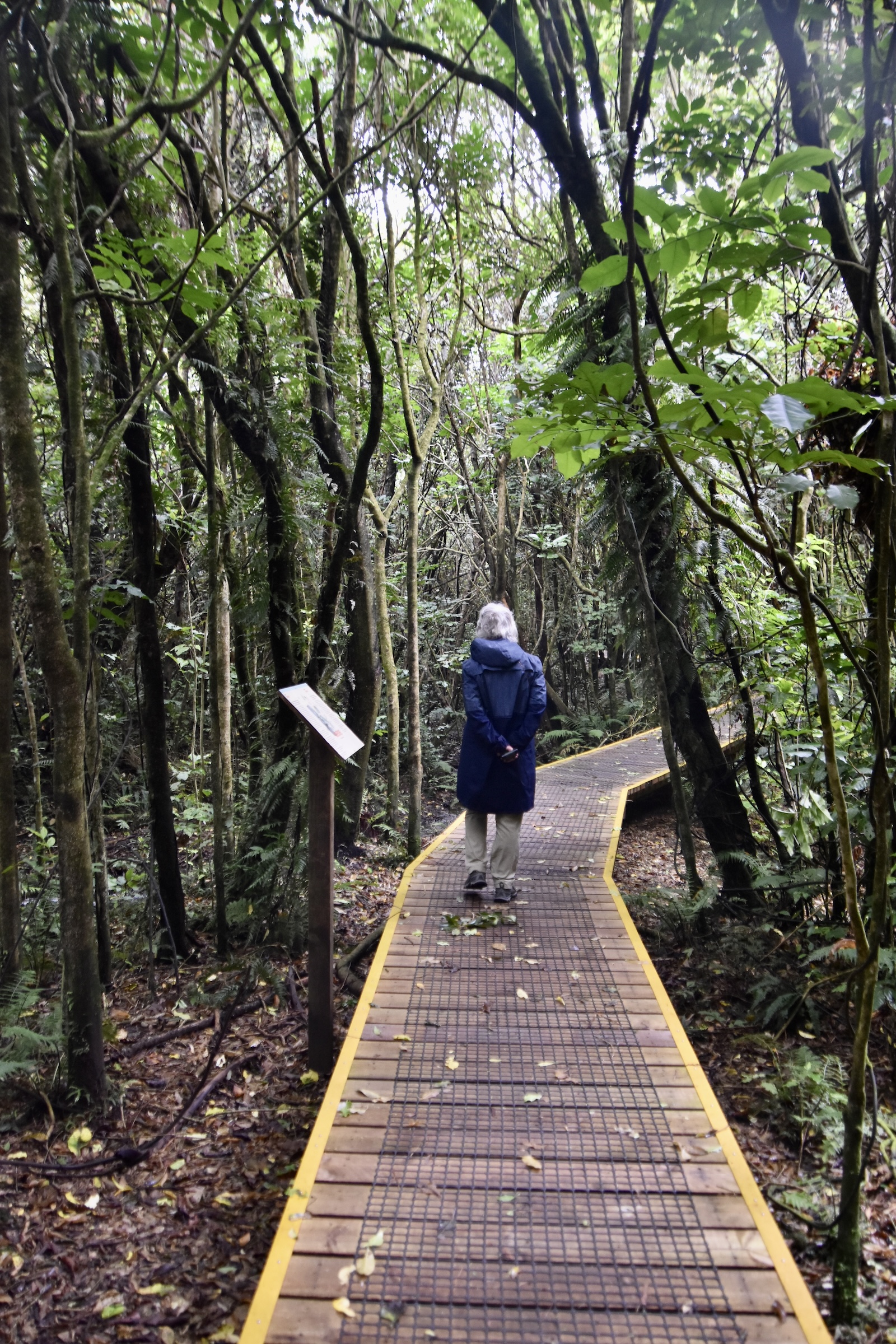
Conditions were not great for photography and I only got a few decent shots, including finally one of the New Zealand native pigeon, the kererū.
- Kereru, Zealandia, Wellington
- New Zealand King Shag, Zealandia, Wellington
- North Island Robin
We spent over three hours walking just a few of Zealandia’s many pathways and despite the drizzle it was one of the highlights of our stay in Wellington.
One last suggestion if you do find yourself in New Zealand’s capital city – have a meal at Charley Noble. This restaurant in the historic Huddart Parker building on the Wellington waterfront is special. I commented in my intro post on New Zealand upon how good the meat and the seafood was throughout the country. The meal we had at Charley Noble epitomized this. The lumina roast lamb was described as being the culmination of a 15 year quest to create the most succulent meat possible. Served with Café de Paris butter, I think they succeeded in that quest.
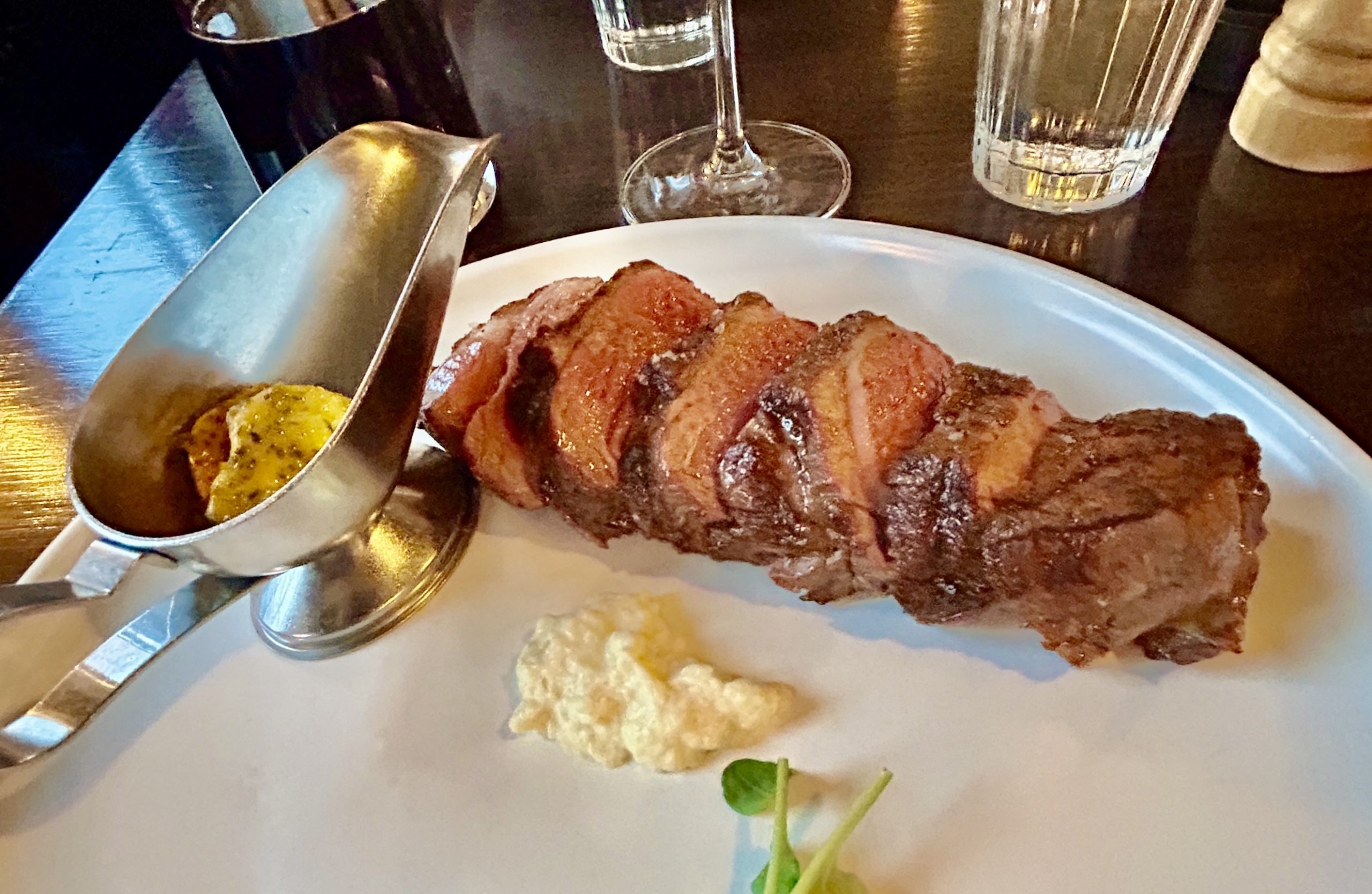
Likewise with the snapper that Alison ordered.
And for dessert this chocolate hazelnut crackle bar was so good I feel like buying a ticket to New Zealand just to have it again.
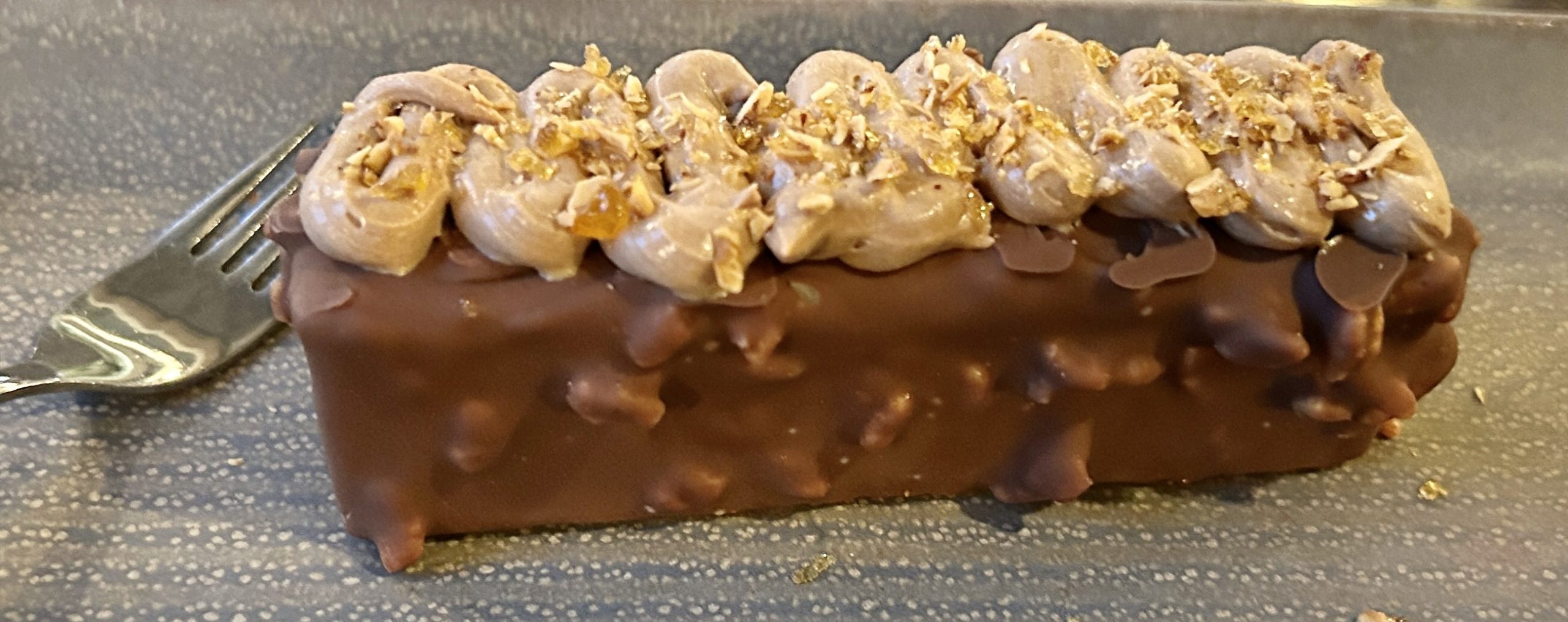
On that sweet note we end our visit to the fair city of New Zealand. In the next post we’ll rejoin our Adventures Abroad friends as we start our exploration of South Island.


